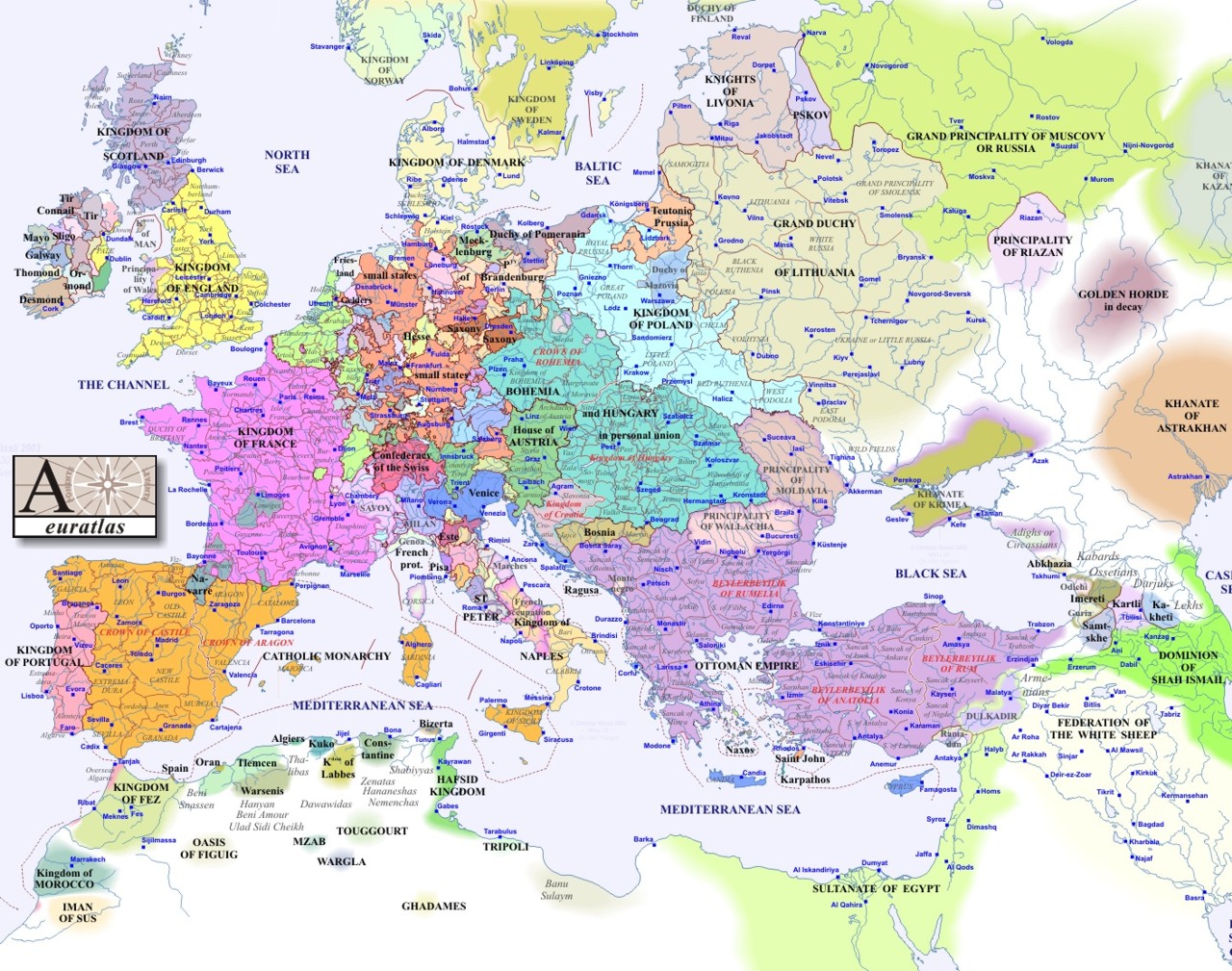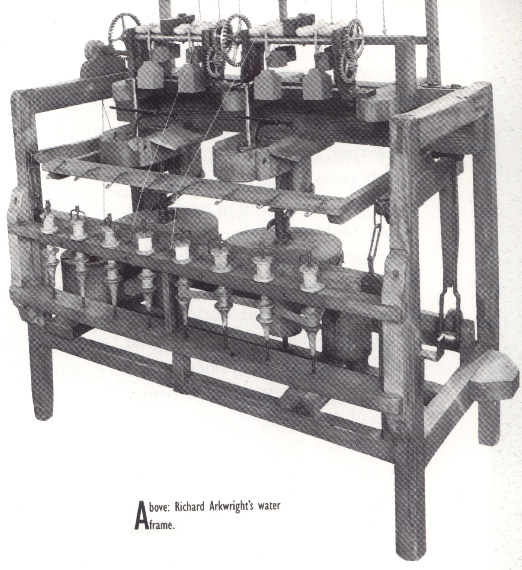
The Enlightenment and the Industrial Revolution
1709 - 1798
Abraham Darby | Population | Richard Arkwright
Europe after Columbus' return from the Indies.
"In the seventeenth and early eighteenth centuries, western Europe's population had staggered along, its mortality rates, especially for children, always high and in some years extremely so. Births barely exceeded deaths even in the best of times. War killed soldiers and peasants indiscriminately. Hunger accompanied war and killed on its own behalf. Worse than famine and war on average, and amplified by both in its effects, was disease, particulalrly the bubonic plague, the chief arbiter of demography during the ancien régime."
Alfred Crosby, 1994. p. 151.
"In the eighteenth century the population of Europe recovered the numbers it lost in the seventeenthh century and rose to leveles previously unknown."
Alfred Crosby, 1994. p. 151.
| Places | 1492 | 1650 | 1800 | change | + | – | |
|---|---|---|---|---|---|---|---|
| 1 | France | 16 | 29.00 | 13 | √ | ||
| 4 | England & Wales | 5 | 9.25 | 4.25 | √ | ||
| 3 | Spain | 7 | 7.5 | 11.50 | 4 | √ | |
| 2 | Italy | 11 | 19.00 | 8 | √ | ||
| Western Europeans | 39.5 | 68.75 | 29.25 | 65% | |||
| All of Europe | 80 | √ | |||||
| Americas | 100 | 90% | |||||
| Crosby's figures in millions, p. 151. | |||||||
Consider what is distinctive about Europe over the last six centuries. In that 600 years its people experienced and enormous surge, not only in numbers – from 60 million to in 1490 to 390 million in 1900 –but of economic growth, intellectual achievement and, and material power."
Alfred Crosby, 1994. p. 161.
"Rarely has population expanded more rapidly than it did the eighteenth and nineteenth centuries in these lands. It is these lands [of the European Demographic Takeover], especially the United States, that enabled Europeans and their overseas offspring to expand from something like 18 percent to the human species in 1650 to well over 30 percent in 1900. Today 670 million Europeans live in Europe, and 250 million or so other Europeans live . . . an ocean or so from home."
Alfred Crosby, 1994. p. 30.
Abraham Darby | Population | Richard Arkwright
Sir Richard Arkwright (1732-1792), inventor, wealthy tradesman, and cotton manufacturer.
 Richard Arkwright is a famous inventor who was born in Preston in 1732. In
the early 1760s he invented a spinning frame, which was powered by water.
Arkwright House, Stoneygate, Preston.
Arkwright was originally trained as a barber. In 1762 he set up his own
wig-making business in Preston.
Arkwright then became interested in cotton spinning. He began working on a
new spinning machine with John Kay, a clock maker from Warrington.
Richard Arkwright is a famous inventor who was born in Preston in 1732. In
the early 1760s he invented a spinning frame, which was powered by water.
Arkwright House, Stoneygate, Preston.
Arkwright was originally trained as a barber. In 1762 he set up his own
wig-making business in Preston.
Arkwright then became interested in cotton spinning. He began working on a
new spinning machine with John Kay, a clock maker from Warrington.
 They
worked on the machine in a house on Stoneygate. This house is now called
Arkwright House. Soon they came up with the spinning frame.
They
worked on the machine in a house on Stoneygate. This house is now called
Arkwright House. Soon they came up with the spinning frame.
Photograph of the Water Frame inside Arkwright house, where Kay and Arkwright worked on the automated spinning machine that makes thread.
Arkwright then left Preston. He built a cotton factory in Cromford, Derbyshire in 1771. This was the first water powered spinning factory. Richard Arkwright was knighted for his achievements. When he died in 1792 Sir Richard Arkwright had a personal fortune believed to be £500,000.
Abraham Darby | Population | Richard Arkwright
Next: Is Evan's mill an adaptive response or exaptation?